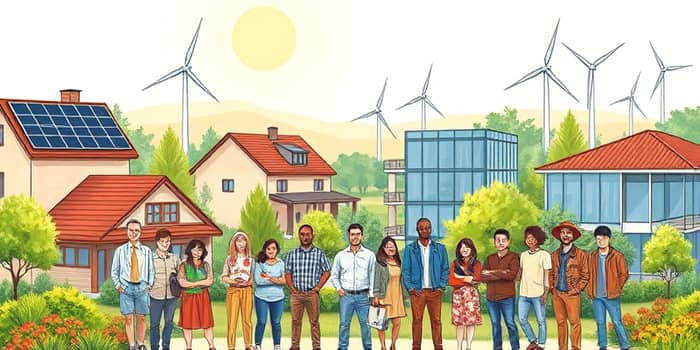
Green loans are transforming how we invest in our planet and communities. By offering targeted financing for eco-friendly projects, they empower individuals, businesses, and governments to innovate and build a resilient future.
Green loans are specialized financial products designed to generate a positive environmental impact. Unlike traditional loans, they come with strict guidelines to ensure funds support projects that reduce carbon emissions, conserve resources, or enhance renewable energy adoption.
The primary goal of a green loan is to enable borrowers to implement sustainable upgrades such as solar panel installations, efficient heating systems, and water-saving infrastructure. These improvements not only benefit the environment but also deliver long-term cost savings through lower energy bills and operational expenses.
A wide range of projects can qualify for green financing. When you apply, your proposed plan must demonstrate real measurable environmental benefits and comply with industry standards. Typical eligible uses include:
By focusing on these areas, green loans can help achieve significant reductions in greenhouse gas emissions and support community resilience.
Applying for a green loan involves careful preparation and transparent communication with lenders. Follow these steps to increase your chances of approval:
Large government-backed loans can involve additional stages, such as conditional commitments and financial close, often spanning up to a year for complex projects.
To maintain market integrity, green loans adhere to standardized principles that foster trust and accountability:
Use of Proceeds: Funds must exclusively support environmental projects, with no diversion to unrelated activities.
Project Evaluation & Selection: Borrowers prepare data-driven plans showing anticipated resource savings and carbon reductions.
Management of Proceeds: Many institutions require borrowers to track loan disbursements in dedicated accounts, ensuring transparent and accountable funding structure.
Reporting: Annual or semi-annual disclosures of performance metrics help lenders and stakeholders verify outcomes and adjust strategies if needed.
Effective accountability measures are central to the credibility of green loans. By requiring independent audits and regular performance reporting, lenders can guard against inflated claims and greenwashing.
Standard protocols include third-party verification of installation quality, ongoing monitoring of energy use, and detailed emission tracking. This rigorous approach ensures that projects deliver genuine ecological benefits rather than just marketing value.
Borrowers benefit from this oversight too, as transparent practices build reputation, enhance stakeholder confidence, and often unlock more favorable loan terms.
The global green lending market continues to expand, driven by regulatory changes and growing investor demand for sustainable finance. Recent developments include:
• Adoption of the LMA Green Loan Provisions in early 2025, which create a harmonized framework for loan documentation, reducing complexity for lenders and borrowers alike.
• Integration of sustainability features into mortgage directives in the EU, encouraging homeowners to pursue energy-efficient retrofits.
• Growing interest in sustainability-linked loans (SLLs), where interest rates are tied to achieving specific ESG targets, such as carbon neutrality or waste reduction goals.
Examples illustrate how green loans create tangible benefits:
A Midwestern school district used a $4 million green loan to install geothermal heating and cooling, reduce your carbon footprint effectively, and save 40% on energy costs in the first year. Meanwhile, a manufacturing plant leveraged a government-backed program to modernize equipment, achieving both environmental and productivity gains.
Green loans represent a powerful tool in the global effort to address climate change and resource scarcity. By following best practices, assembling clear project proposals, and committing to transparent reporting, borrowers can secure attractive financing and drive meaningful environmental progress.
Whether you are a homeowner seeking energy-efficient upgrades or a city planner envisioning green infrastructure, green loans can help accelerate the transition to sustainability. Explore available programs, prepare your documentation, and take the first step toward a healthier planet and a resilient financial future.
References













